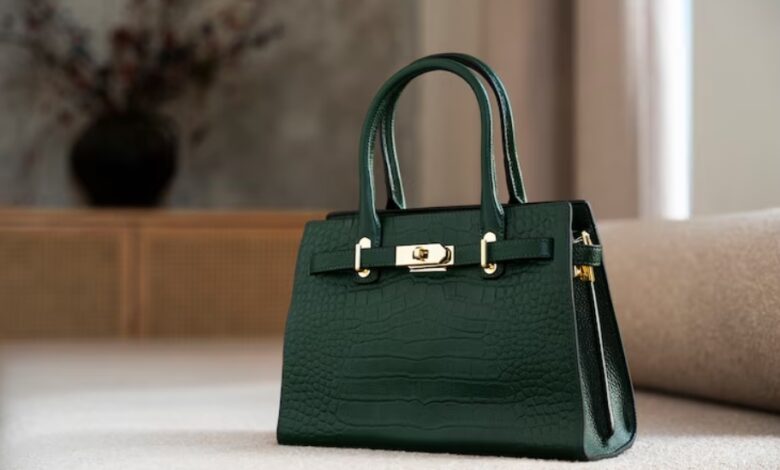Designer Handbags: A Legacy of Luxury, Style, and Timeless Elegance

The Enduring Attrection Of Designer Handbags
The love for designer handbags transcends generations as a marker of elegance, class, and affluence. Accessories are more than just fashion, and designer bags often signify heritage and craftsmanship alongside personal expression. They are adored by everyone ranging from iconic fashionistas to contemporary style lovers. So in this article, we will explore everything from the history to the timeless captivation that come with designer handbags.
Brief Overview Of The History Of Designer Handbags
The concept of handbags dates back centuries. They began as a simple necessity before evolving to a sophisticated object of desire. Their emergence as a fashion statement occurred around the 19 centuary. With sophistication, Louis Vitton and Hermes marked the 1900s with the creation of elegant yet functional handbags. These transformative brands are the reason behind modern luxury designer handbags as aspirational items. They changed the trends, but have always dedicated themselves to honoring timeless legacies.
What Qualifies As A Handbag “Designer”?
A handbag is termed profoundly special when a renowned luxury boutique creates them with expert attention to detail and premium materials. These designer bags are further distinguished by brand logos, signature hardware and unique style which set them apart from generic handbags. Chanel, Gucci, Dior, and Prada, for example, are known for having high quality standards and these justify the prices. A designer handbag can be viewed as a product containing arrays of intricate art blended with couture and engineering.
Why Women (And Men) Love Designer Handbags
Without a doubt designer handbags put forth a massive impact, however, there is more than meets the eye. To many of the consumers, it tends to be a smart purchase due to the longevity and resale value. Apart from that, a luxury handbag can help an individual boost their confidence, help them complete an outfit, or celebrate their achievements. In recent years, there has been a rise in masculine consumers which have started appreciating handbags, particularly the crossbody style and totes, thus broadening the appeal for the market.
Investment Value and Resale Market
With time, the prices of designer handbags does tend to appreciate. Certain styles or limited editions like the Hermès Birkin and Chanel 2.55 tend to go for a higher retail price in secondary markets. The RealReal, Vestiaire Collective, and Fashionphile have allowed ease for buyers and collectors to trade luxury bags in a secure environment. Just like fine art, a designer handbag which is protected well can serve as a long term investment.
Craftsmanship and Materials
What separates designer handbags distinctly and foremost is their craftsmanship. They often feature intricate design and sophisticated detailing, and most are made painstakingly by hand, requiring hours or days to complete each individual piece. Such handiwork is complemented by the use of Italian leather, exotic skins like crocodile or python, custom linings, and gold plated hardware which only adds to the brand’s identity. To further enhance their desirability, brands often issue themed collections each season that build on experimenting with different colors, patterns, and textures.
Popular Designer Handbag Brands
While there is an extensive list of luxury handbag brands, very few of them have widespread appeal. Fashion declares the Chanel brand to be one of its most treasured. Known for their iconic interlocking C logo and a quilted design, sintingat with it’s unique monogram canvas makes Louis Vuitton stand out. Lady dior is dior’s most revered handbag which epitomizes timeless elegance while Gucci constantly updates old styles for new trends, giving an innovative approach. Each brand offers distinct appeal which allows easy choice for every aficionado.
Choosing the Right Designer Bag
Choosing the right designer handbag requires careful consideration of one’s lifestyle and preferences, believing femininity defines it. For casual occasions, a sturdy shoulder bag or tote would serve great, while increasing elegance and bearing sleek lines or stylistic motifs for evening events calls for a mini or clutch bag.
It is equally important to explore the brand’s history, resale worth, and methods to verify authenticity prior to making the purchasing decision. Many consumers also choose to buy previously used bags as a means to obtain rare or discontinued designs for lesser prices.
How To Differentiate a Real Designer Handbag From a Fake One
As more people become interested in luxury handbags, the availability of imitations becomes a primary concern. To differentiate, one has to look meticulously at the stitching, hardware, tags, and serial numbers. Each authentic designer bag comes with unique precision stitching which means the stitching is straight, uniform, and on point with no hanging threads. In addition, the hardware is always heavy, bears logos and is never paint-coated. Also, Louis Vuitton and Chanel designers issue authenticity cards as well as serial code stamps and date stamps. These can be verified via the brand or authentication services. It is important to learn these elements especially in pre-owned purchases to avoid fraud.
Conclusion
A designer handbag serves more than an accessory—it denotes a personal statement, preference and even an economic vision. Whether you are a first-time buyer, or an experienced shopper, having knowledge about the essence of the bag will foster support towards this beautiful form of fashion. While trends may shift, the reality is clear—they will continue to be an integral part of luxury items.



